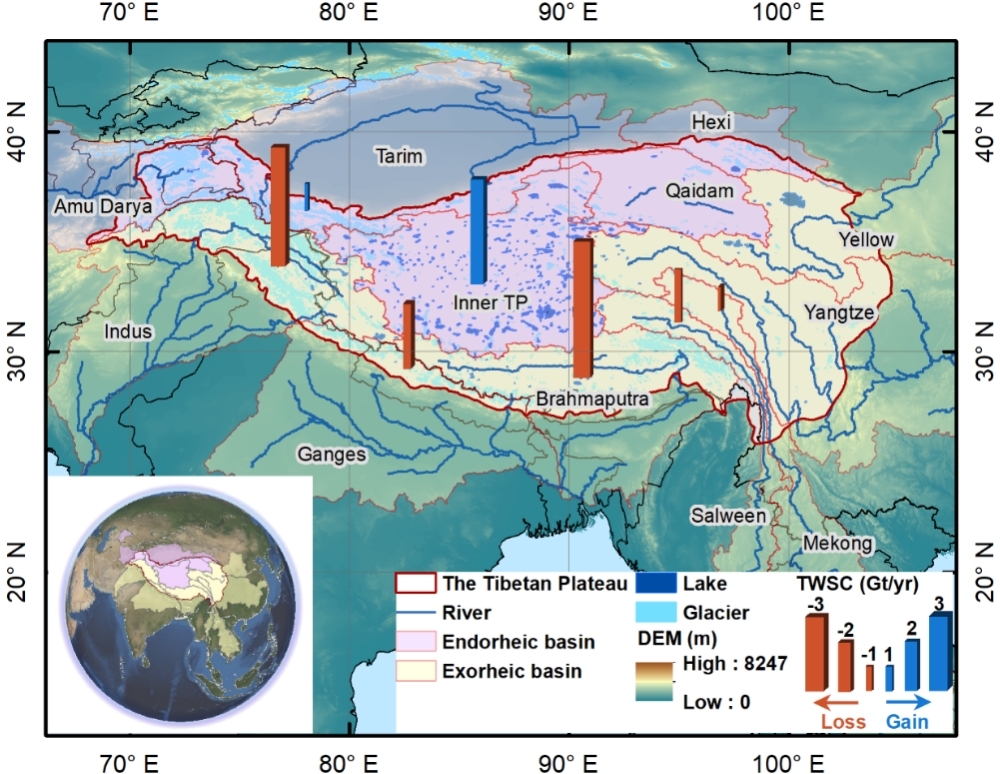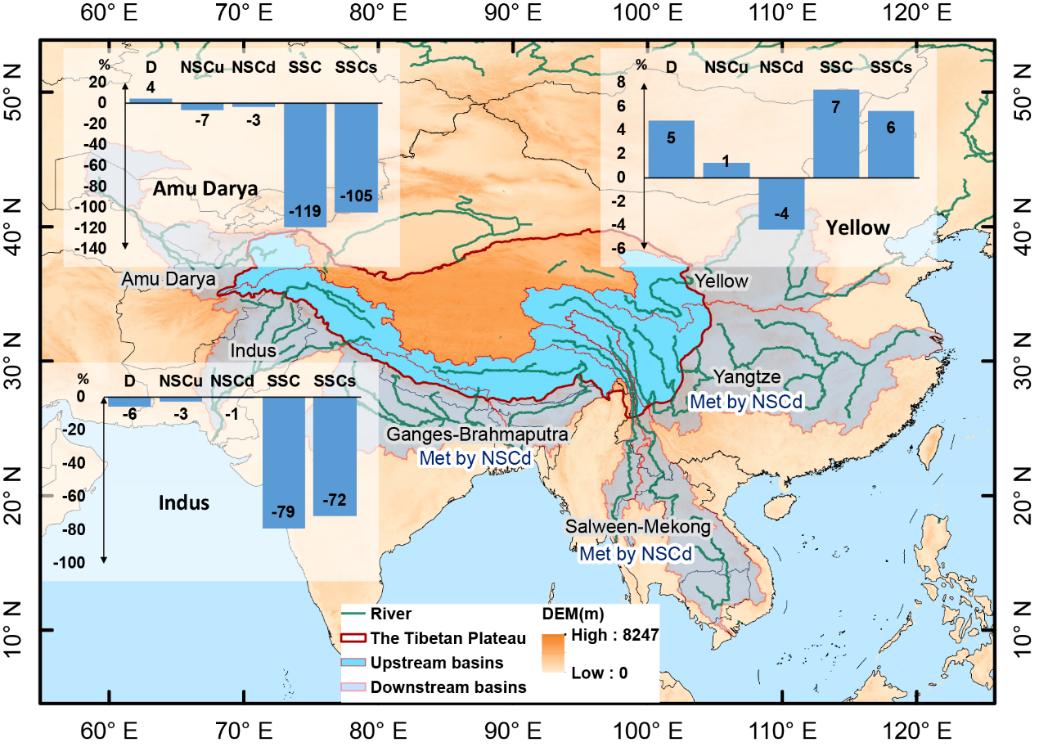Dr. LONG Di's team and collaborators published the latest research results on the impact of climate change on water storage over the Tibetan Plateau in Nature Climate Change under the title of "Climate change threatens terrestrial water storage over the Tibetan Plateau," with LONG Di as the corresponding author, and doctoral student LI Xueying as the first author. Other co-authors include PhD student LI Xingdong, Prof. TIAN Fuqiang, Dr. SUN Zhangli, Prof. WANG Guangqian, Prof. Bridget Scanlon of the University of Texas, and Prof. Michael Mann of the Penn State University. This study was co-funded by the National Natural Science Foundation of China and the Second Tibetan Plateau Scientific Expedition and Research (STEP) programme.
General Secretary XI Jinping pointed out that "the Tibetan Plateau is the roof of the world, the water tower of Asia, and the third pole of the earth. It is an important ecological security barrier and strategic resource reserve base in China, and an important protection site for the distinctive culture of the Chinese nation." Changes in various types of terrestrial water storage over the Tibetan Plateau (e.g., lakes, glaciers, soil water, and groundwater) are closely related to the regional energy, water, and carbon cycles, the recharge of ice and snowmelt from the source areas of major rivers in Asia, and the utilization of water resources by the downstream population of about 2 billion people. Climate change has caused significant imbalances in the water storage of the "water towers of Asia" over the past two decades, posing a series of challenges to the sustainable development of the region.
Dr. LONG Di's team inverted and predicted changes in terrestrial water storage over the Tibetan Plateau from 2002 to 2060 and assessed the threat to the water supply capacity of the downstream region. The results show that TWS over the entire TP decreased by 10.2 Gt yr–1 (P < 0.05) during the GRACE period (2002–2017) on the basis of JPL-M, reflecting the balance between a decreasing trend in the exorheic region (−15.8 Gt yr–1; P < 0.05) and an increasing trend in the endorheic region (5.6 Gt yr–1; P < 0.05). Significant TWS declines were attributed mainly to glacier retreat over the Hindu Kush–Himalayan–Nyainqentanglha mountains (for example, −10.1 Gt yr–1 across the Indus–Ganges–Brahmaputra region), and the subsurface depletion that may be associated with degradation of seasonally frozen ground (for example, −1.8 Gt yr–1 across the Salween–Mekong basins). However, large increases in TWS were caused by lake expansion (for example, 5.8 Gt yr–1 in the Inner TP basin) and glacier mass gain across the Karakoram and Western Kun Lun Mountains (for example, 0.9 Gt yr–1 in the Tarim basin). Water-storage changes over the TP are highly linked to downstream water availability (for example, melt water for irrigation) and natural disasters (for example, glacier collapse and lake outburst).

Lakes, glaciers and major river basins on the TP. Endorheic basins are shown in light purple and exorheic basins in light yellow. Bar plots show TWSC for each basin (only basins with TWS trends ≥ 1.0 Gt yr–1 are shown) during 2002–2017, estimated from the GRACE JPL-M solution. Blue bars represent mass gain; red bars represent mass loss. Bar sizes represent the magnitude of TWSC (Gt yr–1). DEM, digital elevation model.
Future TWS projections under the mid-range SSP2–4.5 emissions scenario suggest that the entire TP could experience substantial TWSC with a net loss of ~230 Gt by the mid-twenty-first century (2031–2060) relative to an early twenty-first-century (2002–2030) baseline. Solid-water resources are likely to diminish, particularly over the Amu Darya and Indus basins, where precipitation is projected to be stable while temperature is projected to rise substantially until the mid-twenty-first century. Excess water loss, particularly the severe reduction in solid-water resources, represents a major threat to the stability of two such vulnerable water towers. The decline in upstream supply capacity caused by TWS loss could be up to 119% and 79% of the downstream water-demand baseline in the Amu Darya and Indus basins, respectively. More alternative water-supply sources, including increased groundwater extraction and more water transfer projects, may be necessary to meet the amplified water shortage in the future. Given the existing large groundwater depletion, rapidly growing population and considerable hydro-political tension along the Amu Darya and Indus rivers, findings highlight the potential for largely amplified water crises and the importance of protecting these two water towers.

Projected changes in water demand and supply capacity in key Asian basins. Percentage shows the change between future and present total water demand (D), NSCu, NSCd, SSC and SSCs relative to the water-demand baseline. The future period is defined as the mid-twenty-first century (2031–2060), and the present period is defined as the early twenty-first century (2002–2030). The water-demand baseline was estimated as the average total water demand during the 2002–2030 period.